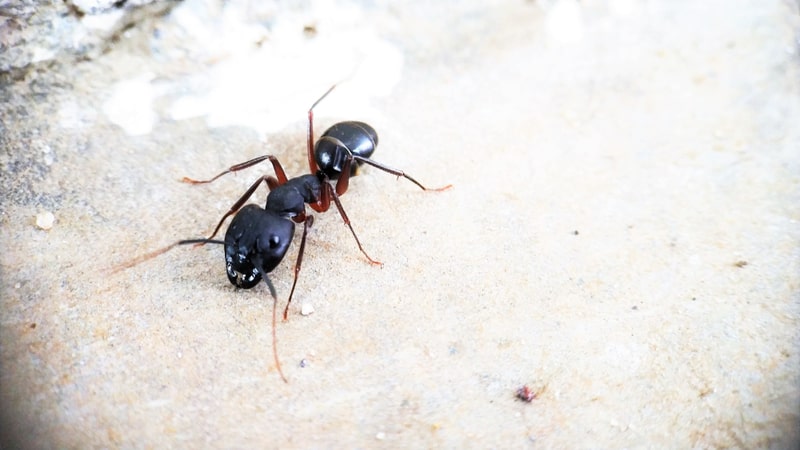If you've spotted large, black ants in or near your house along with small piles of what looks like sawdust, there's a chance you may have wood ants. As their name might suggest, wood ants — also called carpenter ants — can cause structural damage to wooden parts of your home.

Learn what attracts wood ants and how to get rid of them.
Why Do I Have Carpenter Ants in My House?
Many people think that carpenter ants eat wood and, therefore, that's what draws them to a house. In fact, these insects don't eat wood at all. Instead, they prefer to get their nourishment in the forms of honeydew — a sweet liquid produced by aphids and similar insects. Inside your home, however, they'll settle for meats, pet food, syrup, sugar and other sweets…but not wood.
What attracts carpenter ants in a home is what most pests are after: food, water and shelter. The shelter is where the damage to your home comes in. Wood ants will burrow into compromised or exposed wood to create tunnels, galleries and nests where they raise their young. (Those piles of sawdust you see are actually “frass," which is left behind from carpenter ants building a nest.) As wood ant nests can grow very large, the damage can become substantial over time.
Related: What Does Carpenter Ant Damage Look Like?
How Do I Get Rid of Wood Ants?
The first step to getting rid of wood ants is to eliminate things that attract them to your home. Make sure you fix any leaks in your house as soon as possible and seal any cracks or gaps in your foundation.
Attractants outside of your home should be eliminated, too. Old tree stumps below grade can be a source of activity. Moisture damage around porch columns can also attract wood ants towards the home. Keep trees and shrubbery trimmed so that they don't touch your house, as these provide ways for carpenter ants to get in. If you have any wood stored near your house, such as scrap lumber or firewood, move it far away: Piles of wood can become damaged by the elements and will attract carpenter ants looking for shelter.
In addition to the above, you'll want to treat for carpenter ants.
How Do I Treat for Carpenter Ants?
Wood ants can be very difficult to control, and the colony in your house may be just one of many satellite colonies. To effectively treat for carpenter ants, you need to locate and treat the entire colony, not just part of it. This may require inspections at night to locate foraging members of the colony when the wood ants are most active.
If you suspect you have carpenter ants, skip the temptation to try DIYs and head straight to the experts. The professionally trained and experienced ant control professionals of Terminix® can help you track down the main colony and any offshoots and will know how best to treat for wood ants in your home.



